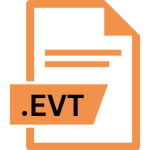.3 File Extension

Unix Section 3 Manual Page
| Developer | Update Soon |
| Popularity | |
| Category | System Files |
| Format | .3 |
| Cross Platform | Update Soon |
What is an 3 file?
The .3 file extension refers to Unix Section 3 manual pages, which are part of the documentation system in Unix-based operating systems.
These manual pages, or “man pages,” provide detailed information about various system calls, library functions, and conventions.
Specifically, Section 3 of the Unix manual is dedicated to the library functions provided by the system. This section is critical for developers and system administrators who need to understand the programming interfaces and functions available in the Unix operating system.
More Information.
The history of Unix manual pages is closely tied to the evolution of Unix itself. Initially, these pages were stored in a troff-based format, which is a text formatting system used in Unix.
Over time, as Unix evolved and different versions were developed, the format of man pages has been updated, but the core idea has remained the same: to provide detailed, structured documentation.
The initial purpose of Section 3 was to document the functions available to programmers through the C standard library and system calls.
These functions are essential for writing software that interacts with the operating system, handles input and output, manages memory, and performs various other tasks. Section 3 serves as a crucial resource for understanding how to use these functions correctly and effectively.
Origin Of This File.
The concept of man pages dates back to the early development of Unix in the 1970s at AT&T’s Bell Labs. The original Unix operating system was designed to be highly modular and extensible, which necessitated a robust system of documentation.
The manual pages were created to provide detailed, accessible documentation on various system components, commands, and programming interfaces. Section 3 of these manual pages specifically focuses on the C standard library functions and system calls.
The .3 extension is a convention used by Unix systems to indicate that a manual page belongs to this particular section.
The practice of using numbered sections helps organize the documentation into different categories, making it easier for users to locate information.
File Structure Technical Specification.
The .3 file extension is associated with man pages that are formatted using the troff/groff formatting system, though modern systems may use other formats such as nroff. The typical structure of a Section 3 manual page includes several key sections:
- Name: The name of the function or library being described, along with a brief description of its purpose.
- Synopsis: The function’s prototype, including its parameters and return value.
- Description: A detailed explanation of what the function does, including its behavior, any special considerations, and how it interacts with other system components.
- Return Value: Information on what the function returns and under what conditions.
- Errors: Descriptions of any errors or exceptions that the function might generate.
- See Also: References to related functions or documentation.
- Notes: Any additional information that might be useful for understanding the function or its use.
The technical specification of these files involves using troff/groff macros to format the content. These macros define how different sections of the page should be rendered, including headings, bullet points, and code formatting.
How to Convert the File?
Converting .3 files to other formats, such as HTML or PDF, can be useful for improved readability or offline access. Several tools and methods are available for converting Unix manual pages:
- man2html: Converts man pages to HTML format, allowing for easy viewing in web browsers.
- man2pdf: Converts man pages to PDF format, which is useful for printing or offline reading.
- groff: The
groffcommand can be used to convert troff-formatted files to various output formats. For example,groff -mandoc -Thtml file.3 > file.htmlconverts a.3file to HTML.
Advantages And Disadvantages.
Advantages:
- Comprehensive Documentation: Section 3 provides detailed documentation on a wide range of library functions and system calls, which is essential for developers working on Unix systems.
- Standardized Format: The standardized format of man pages makes it easy to find and understand information, regardless of the specific Unix variant being used.
- Integrated Help System: Man pages are readily accessible through the
mancommand, providing quick access to documentation from the command line.
Disadvantages:
- Complex Formatting: The use of troff/groff macros for formatting can be complex and may require a learning curve for those unfamiliar with these tools.
- Limited Interactivity: While man pages are text-based and comprehensive, they lack interactive elements that could enhance understanding, such as examples or visual aids.
- Fragmented Documentation: In some cases, the documentation can be fragmented or incomplete, particularly for less common functions or system calls.
How to Open 3?
Open In Windows
- Windows does not natively support Unix manual pages. However, you can use tools like Cygwin or Windows Subsystem for Linux (WSL) to access and view
.3files. Alternatively, you can convert the.3files to a more accessible format like HTML or PDF using conversion tools.
Open In Linux
- On Unix and Linux systems, you can view
.3files directly using themancommand. For example,man 3 printfdisplays the manual page for theprintffunction. If you need to view the raw content of a.3file, you can use text editors likevi,nano, orless.
Open In MAC
- macOS, being Unix-based, also uses the
mancommand to display.3files. You can useman 3 printfto view the manual page forprintf. For raw file access, use text editors or thelesscommand.











